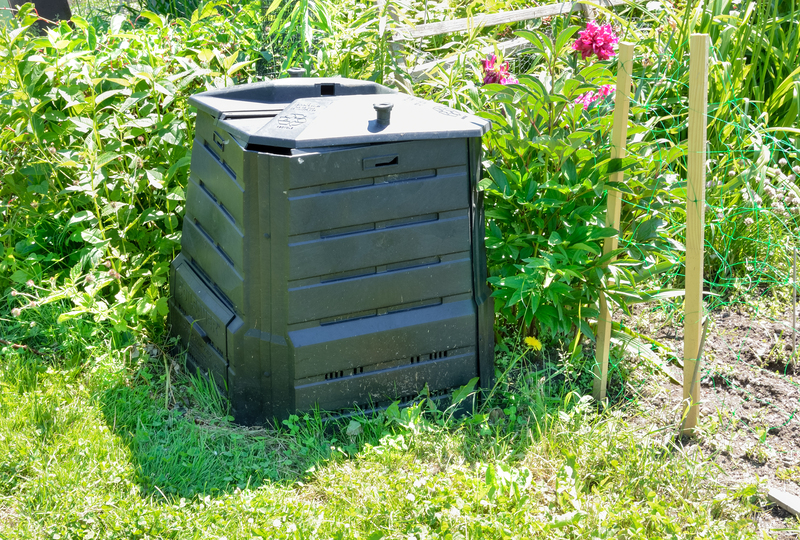Declutter With Purpose: How to Donate or Recycle Used Cookware
Did you know that decluttering your kitchen not only gives you a cleaner, more organized cooking space but also helps the environment and your community? If you have old pots, pans, baking trays, or other kitchen utensils gathering dust, it's time to declutter with purpose. By learning how to donate or recycle used cookware responsibly, you can make a positive impact while simplifying your life. This comprehensive guide will walk you through everything you need to know about giving your cookware a second life.
Why Decluttering Your Cookware Matters
Most kitchens are filled with items that see little to no use--duplicate frying pans, warped baking sheets, outdated gadgets, and chipped pots. Over time, clutter can accumulate, making it hard to find what you actually need and use. Here's why focusing on decluttering your cookware is essential:
- Saves Space: Free up valuable kitchen storage for tools you love and use daily.
- Reduces Stress: A tidy kitchen makes meal prep more enjoyable and efficient.
- Helps Others: Donating gently used items supports those who may not afford new cookware.
- Benefits the Environment: Recycling cookware keeps valuable materials out of landfills.
Let's dive into the best ways to clear out your kitchen--with purpose and intention.

Step 1: Take Inventory of Your Used Cookware
Before you can donate or recycle your used cookware, it's vital to sort through what you have. Here's a simple way to get started:
- Gather all cookware: Bring out every pot, pan, baking sheet, and cooking tool from drawers, cupboards, and shelves.
- Assess condition: Sort items into three piles:
- Gently used and fully functional (good candidates for donation)
- Well-worn, scratched, or damaged (potentially recyclable)
- Irreparably broken or unsafe items (must be recycled or disposed of)
- Decide what to keep: Only retain items you regularly use and genuinely love.
Tip: Be honest with yourself--if you haven't used that specialty pan or third spatula in over a year, it's probably time to let it go.
Step 2: Clean and Prepare Cookware for Donation or Recycling
Whether you decide to donate or recycle your old cookware, cleaning is an important first step:
- Wash with warm, soapy water to remove grease and food residues.
- Remove labels or stickers if possible.
- Dry thoroughly to prevent rust or mold.
Items destined for donation should be free from rust, chips, and significant wear. Recyclable cookware does not need to be in perfect condition, but it should be empty and reasonably clean.
Step 3: How to Donate Used Cookware
Gently used pots, pans, and utensils can find new homes through donation. Here's how to ensure your cookware serves someone else:
Best Places to Donate Used Cookware
- Thrift Stores and Charity Shops: Goodwill, Salvation Army, and local thrift stores accept household goods, including cookware.
- Homeless Shelters and Transitional Housing: Many shelters appreciate donations of kitchen essentials to help those starting over.
- Food Banks and Soup Kitchens: Community kitchens use donations to serve meals. Call ahead to confirm they'll accept cookware.
- Community Centers and Churches: These organizations often support families in need and may distribute household items.
- Online Marketplaces: Use websites like Nextdoor, Facebook Marketplace, or Freecycle to give away cookware directly to neighbors in need.
Tips for Donating Used Cookware Responsibly
- Check donation guidelines: Not all charities accept every type of cookware, so call ahead or check their website.
- Donate only usable items: Pots and pans should be clean, free of heavy rust, and have handles and lids in working condition.
- Bundle items smartly: Put lids with matching pots and secure items together for easy handling.
- Include instructions: If you have specialty cookware (like a tagine or waffle maker), consider taping instructions or recipes to the item for the next owner.
Benefits of Donating Used Cookware
- Reduces waste by keeping items in circulation.
- Helps families in need start or restart their households.
- Supports charitable organizations and community missions.
- May be tax-deductible: Save donation receipts for potential tax benefits.
Step 4: How to Recycle Used Cookware
Sometimes, cookware is too worn out for donation--think warped pans, peeling nonstick coatings, or broken handles. But don't toss them in the trash! Many types of cookware can be recycled, keeping useful materials out of landfills.
Types of Cookware That Can Be Recycled
- Cast Iron: Highly recyclable; bring to a scrap metal recycler.
- Stainless Steel: Most recyclers accept stainless steel pots, pans, and utensils.
- Aluminum: Lightweight pans are easy to recycle but must be pure aluminum (check for plastic handles or composite parts).
- Copper: Copper cookware is valuable to metal recyclers.
Note: Nonstick cookware can be tricky--old Teflon (PTFE) coatings may not be accepted everywhere. Check with your local recycler for guidelines.
Where to Recycle Old Cookware
- Scrap Metal Recycling Centers: Your best bet for all-metal cookware, including stainless steel, cast iron, and copper items. Remove non-metal parts (plastic handles, glass lids) if possible.
- Curbside Recycling: Some municipalities accept metal cookware in curbside bins, but check with your city for rules.
- Special Collection Events: Some areas hold annual events for hard-to-recycle items, including household metal goods.
- Manufacturer Take-Back Programs: Certain brands (like Calphalon and TerraCycle) offer mail-in recycling options--visit their websites for details.
Preparing Cookware for Recycling
- Remove non-metal parts: Unscrew plastic or wooden handles, and separate glass lids if required.
- Rinse clean: Excess grease or food can contaminate recycling streams.
- Sort by material: Group similar metals together for easier drop-off.
- Contact your recycling center: Not all centers accept the same items. A quick call saves trouble.
Other Creative Ways to Reuse or Repurpose Old Cookware
Still feeling crafty? If your cookware can't be donated or recycled, don't give up just yet! Many items can be repurposed into new, useful objects around your home or garden:
- Planters: Old pots make quirky, durable containers for herbs and flowers.
- Birdbaths or Feeders: Upcycle frying pans or bowls for your backyard wildlife.
- Storage: Use deep saucepans to store utensils, tools, or craft supplies.
- Decor: Transform well-worn cookware into rustic wall art, clocks, or display pieces.
- Play Kitchens: Retired pots and pans are perfect for kids' pretend play.
A little imagination can help keep even the most battered cookware out of the landfill!
Declutter Sustainably: What Not to Do With Used Cookware
- Avoid tossing cookware in the regular trash. This contributes to landfill waste and wastes valuable resources.
- Don't donate unsafe or unusable items. Charities can't use damaged, rusty, or heavily worn cookware, and it costs them to dispose of it.
- Don't mix materials. Bundling metal pans with glass or non-metallic parts can complicate recycling.
The goal is to declutter with purpose--making sure each item is handled in the most responsible way possible.

Frequently Asked Questions About Donating or Recycling Used Cookware
Can nonstick pans be recycled?
Nonstick pans with Teflon (PTFE) coating can be recycled as scrap metal only after the coating has worn away or if your local recycling center specifically accepts them. Always check with your municipality before recycling nonstick cookware.
Are there any cookware items that cannot be recycled?
Cookware with heavy plastic components, glass lids, or ceramic coatings may not be accepted at all recycling centers. Broken ceramics or glass lids should usually be disposed of with regular trash unless your city offers specialized recycling.
Should I remove handles and lids from cookware before recycling?
Yes, when possible. Separate materials (plastic, wood, glass) make recycling more efficient and are often required by facilities.
Can I donate cookware that's missing a lid?
Generally, it's best to donate complete items, but some organizations may accept lidless pots and pans. Call ahead to verify.
Can I recycle aluminum foil pans with my other cookware?
Yes, clean aluminum foil pans can be recycled at most scrap metal centers--but rinse them well! Food residue can ruin recycling batches.
Final Thoughts: Declutter With Purpose
Decluttering your kitchen doesn't have to mean creating more waste. Donating or recycling used cookware is a simple way to streamline your space, help those in need, and make a positive environmental impact. By following the steps outlined above, you can give your old pots and pans a second life--whether they cook another meal, support a neighbor, or become something entirely new.
- Take inventory, keep what you love.
- Clean and donate usable pieces to local charities.
- Recycle broken or outdated cookware responsibly.
- Repurpose creatively when possible.
Declutter with purpose. Your kitchen--and your planet--will thank you.
Ready to start your kitchen transformation? Share your own cookware decluttering stories and tips with us below!
```